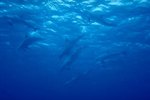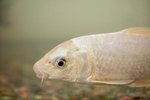
Discus fish are widely recognized as some of the most colorful freshwater aquarium fish, which makes them incredibly popular among hobbyists. If you hope to keep discus fish successfully in a captive environment, it's important you understand their basic needs and tank requirements. This includes understanding where discus fish can be found in the wild and what type of diet they typically eat.
Discus Fish Facts
The discus fish belongs to the family Cichlidae, which is one of the largest families of freshwater fishes, containing over 2,000 different species. This group, referred to as cichlids by aquarium hobbyists, is home to some of the most colorful species of freshwater fish, and the discus fish is no exception. Though wild discus are often brown or green in color, specimens achieved through selective breeding exhibit a wide range of vibrant colors and patterns. In the wild, discus fish can achieve a length of up to 6 inches, though they have been known to grow larger in captivity.
Natural Habitat
Discus fish are naturally found in the Amazon River region of South America. The natural habitat of these fish ranges from the Rio Putamayo in Colombia to the Rio Tocatins drainage in Brazil. Populations of these fish have also been introduced into Suriname and Guyana. In the wild, discus fish are not typically found in the main channels of the river -- they tend to inhabit slow-flowing tributaries and pools. These fish can be found living in schools among the tree roots and rocks in sheltered, deep-water areas.
Wild Discus Fish Diet
In the wild, discus fish feed primarily on zooplankton and other small aquatic organisms like insects and invertebrates. Wild discus fish tend to forage for food throughout the day rather than eating large portions at any one time. Due to the laterally compressed structure of their bodies, these fish cannot tolerate large portions of food, thus overfeeding can be a significant concern with captive discus fish. Wild discus may occasionally feed on plant matter, but they are unlikely to damage live aquarium plants in captivity.
Feeding in Captivity
The food you feed your captive discus fish can have a significant impact on its coloration. In order to meet their basic nutritional needs, discus fish require a varied diet of commercial cichlid flakes or pellets supplemented with various live, frozen and freeze-dried foods. To enhance the color of your cichlids, offer them shrimp eggs or commercial foods that have been fortified with color-enhancing ingredients like paprika, lobster roe and astanxanthin. Keep in mind that wild-caught specimens may not accept commercial foods at first and may need to be fed a diet of live food. Tank-bred specimens, however, should readily accept commercial flakes and pellets.
References
Photo Credits
-
Jochen Sands/Digital Vision/Getty Images
Writer Bio
Katherine Barrington has written on a variety of topics, from arts and crafts to pets, health and do-it-yourself projects. She has a Bachelor of Arts in English with a creative writing concentration from Marietta College.




